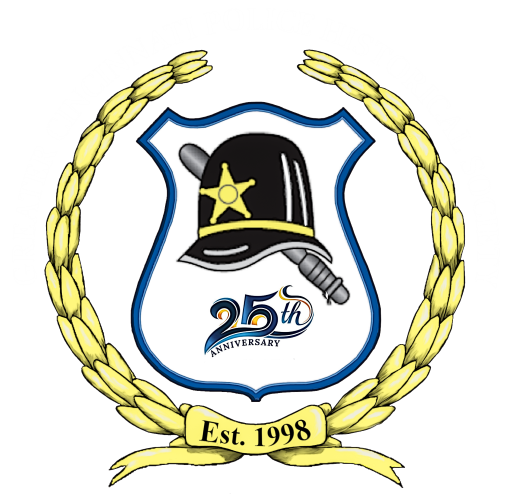
Age: 24
Served: 3½ months
June 2, 1925 to September 14, 1925
OFFICER
We believe Clifford was born during September 1898 in Kentucky, the second son born to farmers, Ludwell Nuton and Minnie Lee (Milligan) Cornish. During his early childhood, the family lived in the Market House in Woodford, Kentucky and, by 1910, moved to Montgomery, Illinois. His mother died from cancer while Clifford was in his teens.
Clifford joined the United States Army at age fourteen. During World War I, on March 4, 1918, the Army created the 72nd Artillery regiment within the Coast Artillery Corps (CAC) and were initially assigned to coastal units at Portland, Maine. We are fairly certain he was one of its charter members. On August 17, 1918, Corporal Cornish shipped from Montreal, Canada aboard the transport ship H.M.T. Takada, destination France. The regiment was still training in Saint Leonard when the Armistice was signed. Hostilities ended in November 1918. During January 1919, he transferred to Paulliac, France and assumed occupation and garrison duties. On March 13, 1919, Sergeant Cornish was aboard the USS Panaman transport to Hoboken, New Jersey. The regiment was disbanded in April 1919. He was discharged
After his military service, he moved to Cincinnati. By 1922, he and his brother, Carl, were working as drivers and rooming at 423 W. 7th Street. By 1925, he was living at 121 Garfield Street and was working as a chauffeur.
Clifford joined the Cincinnati Police Department as a Substitute Patrolman on June 2, 1925. He was assigned to District 5 (1024 York Street). He and his partner, Patrolman Thomas Coleman, had been working on cleaning up the Clark and Harriet Streets corner of its bootleggers and narcotics dealers.
MURDERER
John Henry Whitfield was born July 2, 1889 in Hopkinsville, Kentucky. On April 16, 1917 he married Goldie Landers in Cincinnati. Later in the year, during the World War I draft, he was exempted from serving for reasons unknown. On June 15, 1922 Whitfield was indicted by a United States Grand Jury for violating the Harrison Act; selling narcotics. During 1923, he was convicted and sentenced to nine months in a Dayton prison. Three months later, he escaped.
INCIDENT
On September 13, 1925, Patrolman Cornish, walking the two-man beat alone because Patrolman Coleman took leave that day. As he had done with his partner, he attempted to clear the intersection at Clark and Harriet. Most of the loiterers moved on, but Whitfield stubbornly stood on the southwest corner and muttered to others standing there, “If this cop frisks me, I’m going to kill him!” As Patrolman Cornish approached, Whitfield swung at him. Patrolman Cornish sidestepped the punches and knocked Whitfield to the ground. Whitfield pulled a .38 caliber revolver and fired five times, striking Patrolman Cornish once through the visor of his cap; the bullet entering his head just over his left eye. His sidearm was still holstered. A bystander, David Jones, standing in front of his own home, was shot in his left hip. Whitfield ran down an alley and escaped.
Patrolman Cornish was transported to General Hospital.
DEATH
Patrolman Cornish died a few hours later on September 14, 1925 at 1:40 a.m., becoming the fifth officer killed in the Fifth District in three years.
He was predeceased by his mother and, two weeks earlier, by his stepbrother, Henry Cornish. Patrolman Cornish was survived by his father, Ludwell Cornish; brother, Carl Cornish (26); and step siblings, Elmer Cornish, Sarah Cornish, and Joseph Cornish. Funeral services were held at 2 p.m. on Wednesday, September 16, 1925 at 1408 Vine Street. He was buried in Vine Street Hill Cemetery. His escort detail included Substitute Patrolmen Charles Kohl, Frank Drees, Fred Kimball, and Joseph Casey.
INVESTIGATION
Major Eugene T. Weatherly and Lieutenants Seebohm and Venn questioned those standing by at the scene. The witnesses almost universally told them that they had seen nothing. Of the two hundred in the area at the time of the murder, almost none stepped forward with information.
On September 15, 1925, Detectives Michael McShane and Leonard Hayes received information regarding Whitfield hiding out at 1221 Gest Street. They notified Detective Chief Kirgan and Detective Sergeant Walter B. Fricke. They and Detectives Frank Hall, Robert Ecker, Victor Odensass, and Fred Seebohm hurried to and surrounded the house and found Whitfield hiding under a bed on the second floor. They also found there the .38 caliber revolver used in the murder and it was loaded with dum-dum bullets of the same caliber found in SubPatrolman Cornish’s body.
When questioned, Whitfield told the detectives, “I killed the officer.” He claimed self-defense. “I was coming home from the boat races Sunday when the policeman came along and told me to get off corner or he would smack me. He did smack me. I shot in self-defense.” The detectives filed a charge of Murder against him.
JUSTICE
Whitfield was arraigned in front of Judge Samuel Bell, Cincinnati Municipal Court, on Wednesday, September 16, 1925. He waived his right to a preliminary hearing and was bound over to the Hamilton County Grand Jury. On September 22nd, the Grand Jury returned and indictment for Murder of the First Degree. Common Pleas Judge Fred L. Hoffman set a trial date of November 2, 1925. Former Judge Arthur C. Fricke would defend Whitfield.
When the case went to trial, friends of Whitfield testified that Patrolman Cornish had first assaulted him. On November 9, 1925 the jury found the murderer Not Guilty.
On November 12, 1925, Whitfield was returned to Dayton to serve out the rest of his time. We believe he moved to the South after his release.
If you know of any information, artifacts, archives, or images regarding this officer or incident, please contact the Greater Cincinnati Police Museum at Memorial@Police-Museum.org.
© This narrative was revised on September 18, 2019 by Cincinnati Police Lieutenant Stephen R. Kramer (Retired), Greater Cincinnati Police Historical Society President. All rights are reserved to him and the Greater Cincinnati Police Museum.


